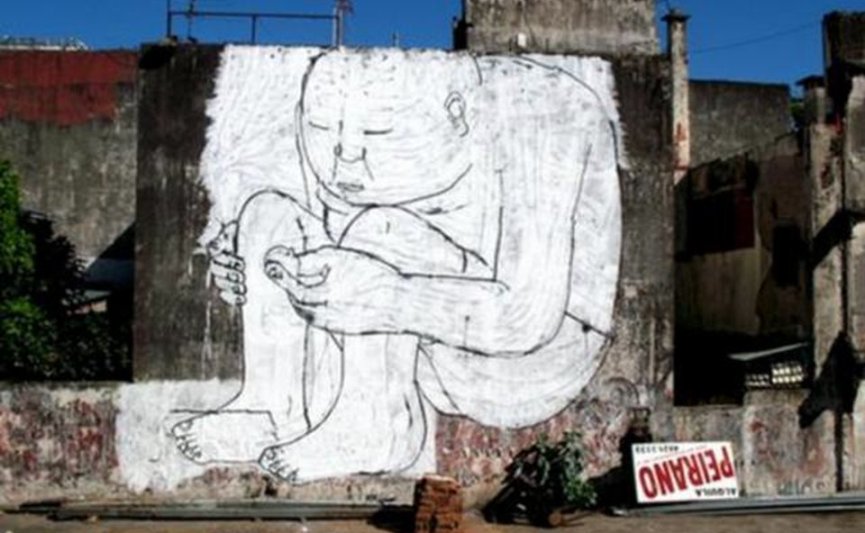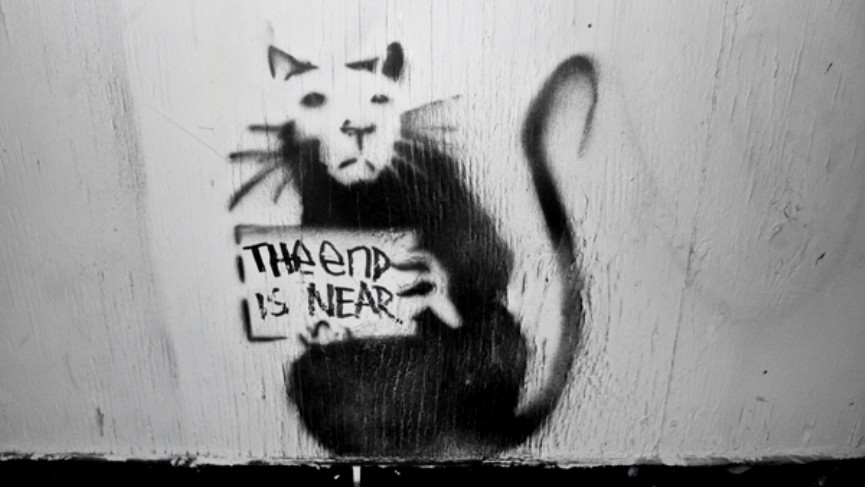What Is Street Art and How Can We Define It?
What exactly is the question we are facing here? How would it be possible to define street art? It could be argued that it is a question for art historians or cultural theorists. However, the first group of thinkers seems to be in need of a temporal distance – there has to be a significant and determined period with an origin, climax and a future perspective in order to define a movement or an art form. As for the cultural theorists and sociologists – it is always a question referring to a cultural context, a question of identity deliberation, or the contemplation on complex social structures and semiotic interpretation. None of this, however, means that we cannot ask ourselves what street art may be. It can be said that it is a movement, most definitely an art expression, but surely, even more than this… Perhaps, an art form in its own right. One thing is certain – street art has become an inevitable integral element of contemporary art. Maybe, then, the question before us is not What street art is, but rather Why has it come to be, and more importantly – where can it go from here?

The Origins of Street Art
It should not be presumed that the beginnings of what we consider street art today necessarily define the notion. To say "It began with graffiti" is no mistake. Some of the aspects of the first graffiti artists’ urges to create in urban settings still reside in the contemporary art expression of street artists. This is crucial, what fueled the drive of graffiti artists in the 1970s and 1980s is the same energy that is present in the activities of street artists emerging during the beginning of the 21st century. If one was to contemplate the origins of street art, one must be cautious not to form a strict relation between the teleological notions of the historical forms of urban art expressions and contemporary incentives of street artists who create today. One is certain – the origins of street art reside in the creative process molded by the artist’s intention to form an antithesis to the prevailing societal context.

The Definition of Street Art - Repetition and Evolution
The presence of street art in an urban context was primarily based on the notion of repetition. What does this mean? Since the impact of the message becomes notable solely through the perceivable presence in the urban context, graffiti artists lived with the imperative to reproduce their typography or different symbolic expression over and over again. In the world when the digital global community we take for granted today wasn’t even conceivable, artists needed to fight for the possibility for their work to be seen. In a recent interview, Andre Saraiva remembers that his days in Paris had been filled with repetitive spray can motions, tagging one mailbox after another. This is a similarity with the street art scene of first years of the 21st century. Already famous names in the world of street art, such as Shepard Fairey and Space Invader, based their activities as artists on the notion of creating the seemingly same art piece repeatedly in different urban spaces of different cities. They had been, in fact, building an identity one print and mosaic piece at a time…
Be sure to check out an interesting selection of works by Shepard Fairey!
Soon enough, the repetition became a process of unimaginable proportions, taken away from the hands of the artists, finding its way to the vastness of virtual space – never to have its presence questioned. This came to be a (r)evolutionary period for the phenomenon of street art.

An Ongoing Transformation of Street Art
However, the transformation of street art was not only influenced by the digital space. Some street artists, who had begun their work with spray cans have started to explore some innovative and inspirational methodological planes. In the art of BLU, street art comes to life in the context of video art. It is not just the fact that the end product represents a mesmerizing form of artistic expression, it is the journey which is happening on the streets as the artist creates. The story conveyed in BLU’s videos can be retraced in the urban setting – bits and pieces of the ephemeral expression building up to a narrative. Still, one cannot but realize that it is not the video file that carries the art, but the street and the walls, and the artist who is willing to take that step into the unknown. Another extraordinary example of a street artist who has taken the road of deconstruction and artistic self-investigation is Vhils. He has given the notion of the wall as an object of creation a new meaning. The dialogue he achieves with the urban context is multi-leveled – from the intervention in the matter itself to the social commentary of the contemporary world of commercialism. How can, then, in the presence of such artists (and we have only mentioned a few), one ask the question what street art really is?

Defining Street Art Does (Not) Have a Conclusion
Coming from the context of urban spaces, street art now lives in the cultural spaces of galleries, virtual communities, public discourses and recently it has become an object of appropriation by the popular culture and the mainstream symbolism of contemporaneity. Art pieces that have come to existence on the walls of cities reached the highest peaks of the contemporary art market. Moreover, the discussion on the meaning of street art resides in the halls occupied by scholars and their students, who ponder the interaction between notions of Visual Art, Conceptual Art, Performance Art and ways of articulating these art forms into the world of street art. It is clear that we are past the point of formulating street art definition as simple as a specific movement or a particular subculture. Surely, saying that it may represent an extraordinary hybrid form of artistic expression would be taking the easy way out.
Find available artworks by Banksy on Widewalls marketplace!
However, if we were to express the relatively stable stances which could form an explanation of what is street art, they would at least include the following: 1. Street art incorporates a strong devotion to social activism (although this is not always the case, it seems that this was an attribute of artwork that survived the test of time), 2. Street art represents a phenomenon that is, through self-transformation, constantly transforming the reality of contemporary art and finally, 3. Street art, as a particular practice, has a role in shaping and constructing new cultural discourses.

Editors’ Tip: Trespass: A History of Uncommissioned Urban Art by Carlo McCormick
This extensive volume traces the beginnings and the rise of graffiti and urban art, as well as its global reach as a fringe visual movement and as a social phenomenon and artistic expression of today’s youth. With an exclusive preface from Banksy, Trespass presents the full history of street art, its international spread, as well as the technical developments. Featuring works by 150 renowned artists such as Miss Van, Jean Tinguely, Keith Haring, Barbara Kruger, Jenny Holzer, Gordon Matta-Clark, Billboard Liberation Front, Guerrilla Girls, and Banksy, the book connects four generations of street art practitioners. The book is divided into thematic chapters that are prefaced by a brief essay, placing the street art in a thought-provoking context to the history, politics, protest, and illicit performance of self-expression in the social space.
Can We Help?
Have a question or a technical issue? Want to learn more about our services to art dealers? Let us know and you'll hear from us within the next 24 hours.

